IDP Collections in Korea
This summary of the history and make-up of the collections held in Korean institutions was produced by the IDP team, led by Susan Whitfield, in November 2010, and has not been updated since then. While we are keeping this text up as a background resource, please be aware that new information may have come to light since its initial writing.
History of the Korean Collections
History of the Korean Collections
The history of Korea’s Central Asian Collections can be traced back to the third century AD. Artefacts from Central Asia, which were predominantly collected by the Kings of the Silla Dynasty (57 BC- AD 935), have been found in Silla tombs. However, the majority of Korea’s Collections consists of items found by Otani Kozui’s three expeditions to Central Asia from 1902 to 1914 (see Japanese Collections). The Otani Collections are held by Ryukoku University, the Tokyo National Museum, the Kyoto National Museum, the Lüshun Museum, the National Museum of China, the National Library of China, and the National Museum of Korea.
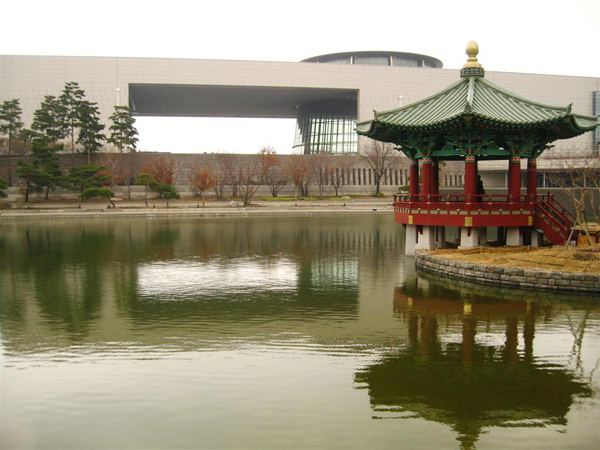
After the retirement of Otani, the 22nd Abbot of the Nishi Honganji Monastery, Fusanosuke Kuhara, a zaibatsu businessman, bought Otani’s residence, the Villa Niraku, and its historical artefacts. Kuhara gave these artefacts to Terauchi Masatake, his old friend and Governor-General of Joseon. The Joseon Government-General Art Museum permanently exhibited them at Sujeongjeon, Gyeongbok Palace, which was the starting point of the Otani Collection and Korea’s possession of Central Asian artefacts.
In the appendix of New Records of the Western World, a collection of diaries by members of Otani’s expedition, the list of excavated items from Central Asia held by the Joseon Government-General Art Museum are included. The list was estimated to be written when Kuhara donated the items to the Governor-General of Joseon. Currently, in addition to these lists, the National Museum of Korea possesses a document indicating that Fusanosuke Kuhara donated the artefacts to General Terauchi Masatake.
The Exhibition and Preservation of Artefacts from Central Asia
The exhibition of Central Asian artefacts in Sujeongjeon started in 1916 and continued until August 15, 1945 when Korea was liberated from Japanese colonial rule due to the end of World War II. The National Museum opened in the same year after taking over the Joseon Government-General Art Museum. Concerned about the danger of fire posed to the artefacts in the wooden building, people including Dr. Chewon Kim, the first director of the museum, and Sherman Lee, a civilian advisor to General Douglas MacArthur and Asian art expert, moved the entire collection to a storage room in the only fire-resistant building of the museum.
Since then, the artefacts had to stay in storage for decades, but this proved fortunate in the long run. Shortly after the end of World War II, the Korean War (June 25, 1950-July 27,1953) broke out, creating the worst tragedy in Korea’s modern history. During this time, nothing went unscathed – even a mummy, considered unique, and from the excavations in Central Asia, was damaged by a bombing in mid-September. Fortunately, however, most of the collections were safely protected in the midst of war.
Efforts by the authorities of the National Museum played a large part in the preservation of the artefacts, and many of the items were moved to the Pusan National University Museum during the war. Since then, the artefacts were then brought back to the newly constructed National Museum of Korea (the current National Folk Museum) in October 1974.
Afterward, the Central Asian artefacts were generally closed to the public, but were occasionally exhibited in parts until 1986. In August 1972, the expanded and reopened museum in Gyeongbok Palace opened an ‘Oriental Gallery’ and displayed foreign cultural products held by the museum. In this special exhibition room, 45 items from Central Asia including earthenware, clay figures, murals, and other artefacts were exhibited. However, these pieces were put into storage again due to the reduction of the display space of the museum in 1996. Then from December 6, 2003 to February 1, 2004, a special exhibition entitled ‘Arts of Central Asia – Collections in the National Museum of Korea’ exhibited a total of 462 items that had been in storage.
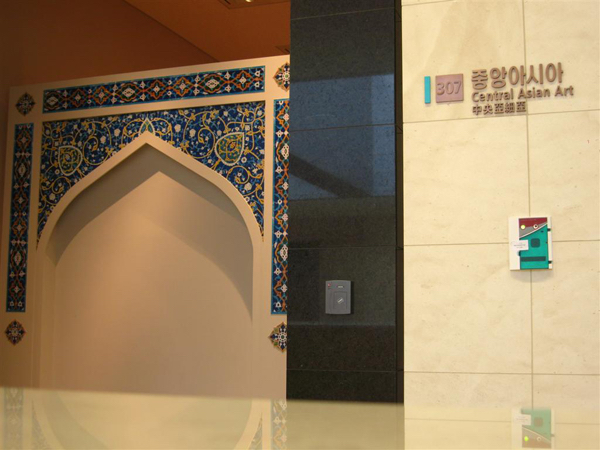
In October 2005, the National Museum of Korea, which was expanded and reopened in Yongsan, established a Central Asian section in the Asian Arts Gallery which includes an India and Southeast Asian section, Chinese Art section, and Japanese Art section. Currently, dozens of items including mural fragments from the cave temples of Bezeklik, ‘Banner with Bodhisattvas’, Painting of a Buddhist Pilgrim’, a Serapis statue, and a funerary banner showing Fuxi and Nuwa, are permanently exhibited in the Central Asian section.
Collections: Contents and Access
1. The National Museum of Korea
1.1 The Otani Collection
The Central Asia Collection in the National Museum of Korea has 60 mural fragments, about 1700 artefacts, and other items that are mostly from Turfan including murals from the cave temples of Bezeklik. The items are largely divided by topic including religious culture, artefacts of daily life, and funerary culture. (This division is based on the method of classification from the special exhibition entitled ‘Arts of Central Asia – Collections in the National Museum of Korea’ held from December 2003 to February 2004.)
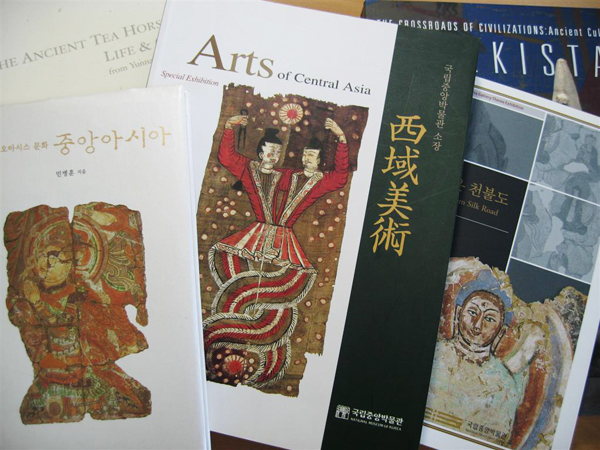
1.1.1 Religious Objects
One of the mural fragments taken from a cave temple in Central Asia displays the regional characteristics of Buddhist culture. In addition, a variety of statues, Buddhist paintings on silk and hemp, Buddhist scriptures, and Manichean art fragments reveal not only Buddhist culture but also indigenous traits and interactions among Central Asian religions.
1.1.2 Artefacts of Daily Life
Central Asian Culture was formed around the oases of arid desert areas, creating a distinct lifestyle. Earthenware made up the overwhelming majority of containers for daily use. Pottery produced in the Khotan region has reoccurring appliqué decorations, which were produced using molds, creating an attractive decorative effect.
Containers made of fabric generally originate from the Lop-Nor region. They are made of materials found in the surrounding area and woven together with adept weaving skills. These containers demonstrate the use of diverse materials and techniques for the production of containers for daily use. Moreover, the spread of Hellenistic culture through the Silk Road is apparent in artefacts such as bronze seals and Serapis statues.
1.1.3 Burial Items
The burial artefacts that were excavated in the Turfan region reveal the lifestyles of the Qu family, rulers of Gaochang (Karakhoja/Kocho) (502-640), and the ruling caste of the Tang who governed the area. The markings on the tomb, guardian monsters, and funerary banner showing Fuxi and Nuwa found in groups of tombs reveal the cultural adeptness of Central Asians who recreated their culture by integrating local characteristics with Chinese culture. Moreover, figurines – particularly female figurines that display the contemporary make-up and hair style of the time – provide evidence of cultural exchanges between the cultures to the east and west.
Continuous bead patterns, which were typical motifs prevalent in the Sassanian Kingdom and served as evidence of exchanges with Western Asia, are found on the surface of diverse types of earthenware that were placed on top of the dead. Since continuous bead patterns were also widely used for patterns on roof tiles in Unified Silla (668 – 935), it is easy to imagine the activity and cultural exchanges along the Silk Road which extends from Central Asia to the Korean peninsula.
1.2 Access to the National Museum of Korea
135 Seobinggo-ro,
Yongsan-gu,
Seoul,
140-026
Korea National Museum Website
The museum is closed on Mondays and New Year’s Day (January 1).
Hours: Thursday, Thursday & Friday: 09:00- 18:00 / Wednesday & Saturday: 09:00-21:00 / Sunday & Holidays: 09:00-18:00
Some of the artefacts are permanently exhibited in Central Asia section in Asian Arts Gallery. Artefacts held by the museum but not exhibited are open to those who have a clear research purpose after being issued special access to artefacts by the museum. The hours of operation are every Monday from 14:00 to 17:00.
Bibliography
- Kwon Yong-Pil, ‘Korea Collection of Central Asian Artifacts: As It Relates to the ‘Otani Collection”. In The Art of Silk Road: From Central Asia to Korea. Seoul: Youlhwadang Publisher, 1997.
- Min Byung-hoon, Culture of the Steppes and Oasis: Central Asia. Seoul: National Museum of Korea, 2005.
- National Museum of Korea, Arts of Central Asia – Collections in the National Museum of Korea. Seoul: National Museum of Korea, 2003
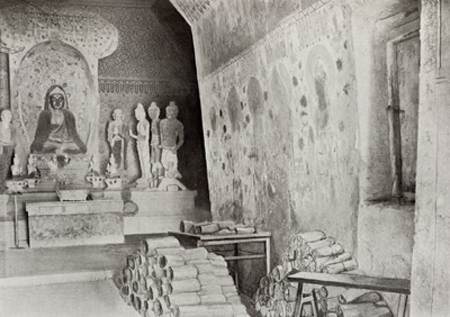
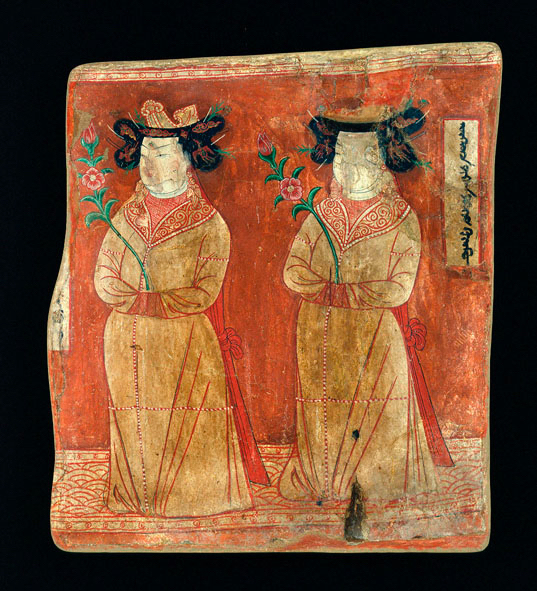


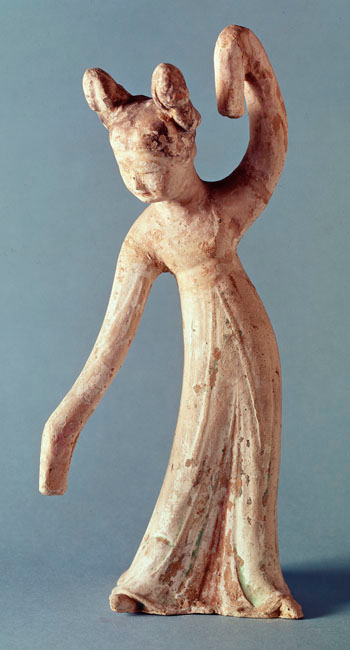

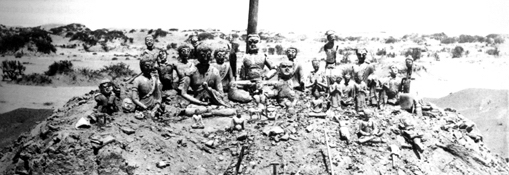
If you have feedback or ideas about this post, contact us, sign in or register an account to leave a comment below